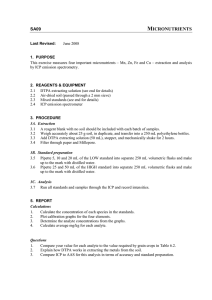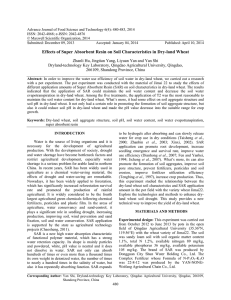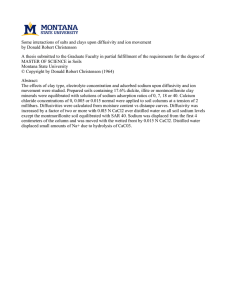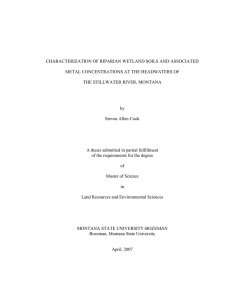D S A R
advertisement
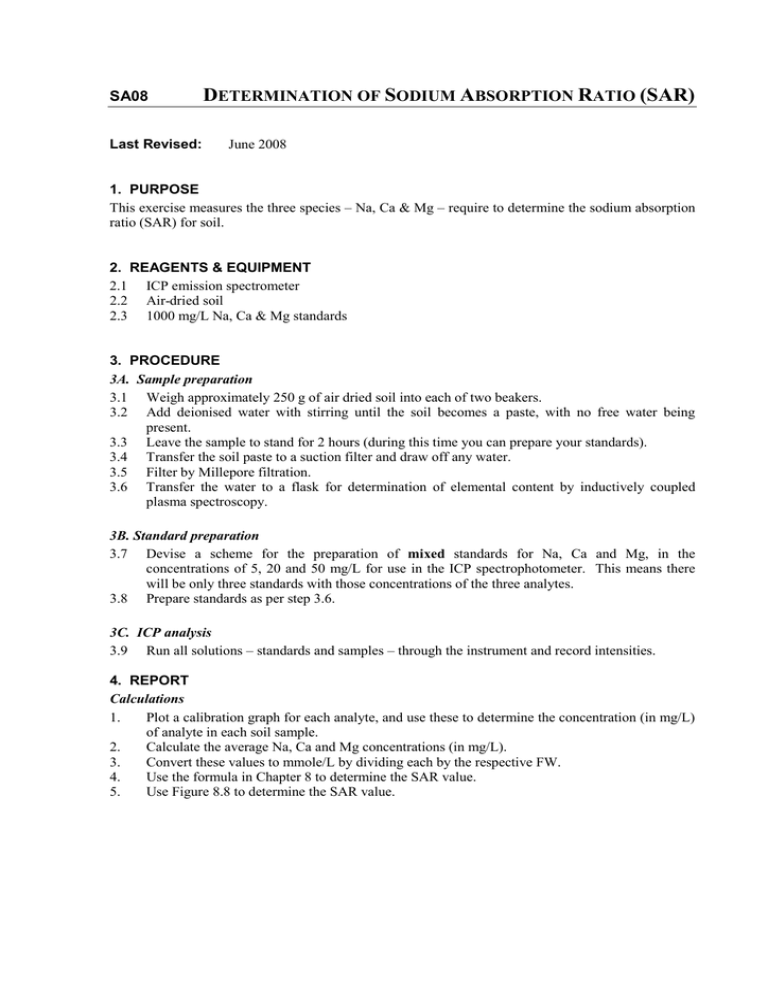
SA08 Last Revised: DETERMINATION OF SODIUM ABSORPTION RATIO (SAR) June 2008 1. PURPOSE This exercise measures the three species – Na, Ca & Mg – require to determine the sodium absorption ratio (SAR) for soil. 2. REAGENTS & EQUIPMENT 2.1 ICP emission spectrometer 2.2 Air-dried soil 2.3 1000 mg/L Na, Ca & Mg standards 3. PROCEDURE 3A. Sample preparation 3.1 Weigh approximately 250 g of air dried soil into each of two beakers. 3.2 Add deionised water with stirring until the soil becomes a paste, with no free water being present. 3.3 Leave the sample to stand for 2 hours (during this time you can prepare your standards). 3.4 Transfer the soil paste to a suction filter and draw off any water. 3.5 Filter by Millepore filtration. 3.6 Transfer the water to a flask for determination of elemental content by inductively coupled plasma spectroscopy. 3B. Standard preparation 3.7 Devise a scheme for the preparation of mixed standards for Na, Ca and Mg, in the concentrations of 5, 20 and 50 mg/L for use in the ICP spectrophotometer. This means there will be only three standards with those concentrations of the three analytes. 3.8 Prepare standards as per step 3.6. 3C. ICP analysis 3.9 Run all solutions – standards and samples – through the instrument and record intensities. 4. REPORT Calculations 1. Plot a calibration graph for each analyte, and use these to determine the concentration (in mg/L) of analyte in each soil sample. 2. Calculate the average Na, Ca and Mg concentrations (in mg/L). 3. Convert these values to mmole/L by dividing each by the respective FW. 4. Use the formula in Chapter 8 to determine the SAR value. 5. Use Figure 8.8 to determine the SAR value. Soil Analysis Practical Manual SA08 Questions 1. Compare the SAR value obtained by the two methods (equation and nomogram). Which do you find easier to use? 2. Comment on the SAR value for your soil sample as it relates to soil fertility. 3. Compare your values for Mg & Ca to the values required by grain crops in Table 6.2. 4. Why is no attempt made to match the matrix of the standards with that of the soil sample? 5. Why do we not employ volumetric glassware in this analysis? 6. What other instrument would have been used for this analysis before the development of the ICP? Compare it for suitability. Page 2 of 2






